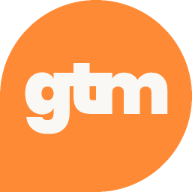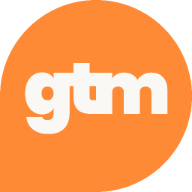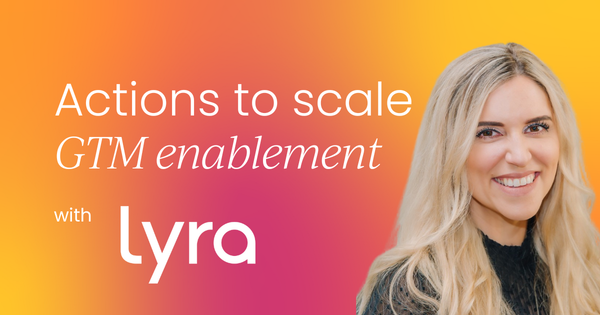Being the first enablement hire is daunting — especially if your ultimate goal is to build a go-to-market enablement function that touches every part of the business.
I’ve been there. In this article, I’ll share what I learned starting from zero so you can avoid the pitfalls, focus on what matters most, and build your enablement function with confidence.
If you’ve recently stepped into a solo enablement role with a to-do list that feels a mile (or several kilometers) long, this is for you 👇
Onboard yourself
Too often, enablement professionals (myself included) want to get straight into the work and immediately start executing.
The role's usually been open for however many weeks or months, meaning there’s a gap that's been waiting to be filled. And naturally, there's often a list of 17 projects your manager wants you to get started on right away.
I see it time and time again, even with our own new hires, that enablers don't ever finish the whole program because they feel they have other work they need to get into.
But that is a really big miss.
In a strategic role like enablement, if you want to set yourself up as a strategic business partner, then you have to understand:
- The business
- The players
- The product
Before you can start to design solutions that will actually work.
There’s a book I read when I first started in my current role called The First 90 Days, which I can’t recommend enough.
I’ve reread it a few times since, including when I was promoted or started working for a new manager.
And off the back of that book’s advice, I took 30 days to truly get onboarded, understand the people I was working with, and fully get to know the product. This was so helpful because it set a strong foundation for what I would then go and build.
I know committing this time to onboarding yourself gets harder the more senior you get, but it actually becomes even more important the more senior you are.

Start prioritizing
The next thing you'll probably say is: "But wait, how can I onboard myself? My boss gave me 17 different things to get done!"
Great – that's where prioritization comes in.
I’ve also experienced that situation, and what I said was: “I can't do all of these at once. As a solo practitioner, there's only so much I can do – so help me prioritize what’s most critical.”
Eisenhower matrix
One of the tools that I regularly use to prioritize is the Eisenhower matrix (some of you may be familiar with this).
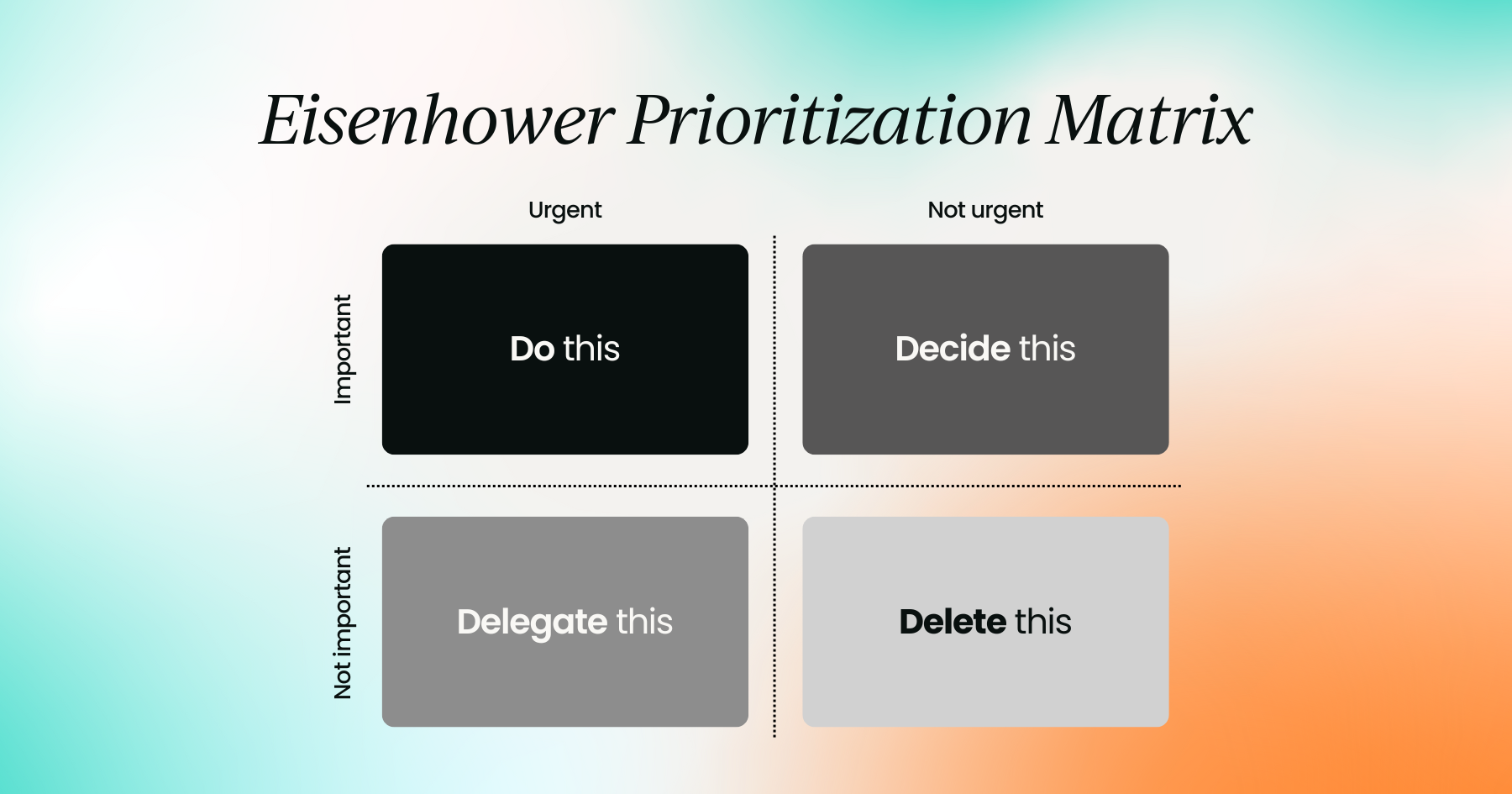
The Eisenhower matrix helps you prioritize tasks based on their urgency and importance. You can use the matrix virtually, filling out each section, or you can literally map it out with sticky notes on a whiteboard.
This lets you move items between sections on the fly, which has helped me think through where I need to focus.
When I first started in this role, there were two really big items on the agenda:
- Building onboarding for our reps (with a new cohort starting in six weeks)
- Creating our first ever sales kickoff
On top of that, there were some other things like evaluating a new Learning Management System (LMS) and building out an upskilling program.
The biggest priority was building onboarding for our incoming sales reps (while onboarding myself) because there was a time crunch. Six weeks after I joined, a new cohort of sellers was coming in, and it had to be ready by the time they started.
Considering the Eisenhower matrix, that onboarding program was both important and urgent. That set a very clear direction for what I needed to do. Remember to be critical while prioritizing. I think this is where enablers get stuck because we can get overwhelmed.
Most of us go into enablement because we want to help people. It’s used negatively sometimes, and this is not how I mean it, but the term “people pleaser” comes to mind.
It can be hard to say no because we want to help the business, and all the ideas coming in are good ones.
But ultimately, saying “no” allows you to focus on the most urgent and important, and better yet, sets you up to thoughtfully design and execute that which is important and not yet urgent.
Business impact and percentage of population
If you’re struggling to prioritize even with the Eisenhower matrix (which happens to me all the time!), try narrowing your focus to business impact.
If you’re supporting a bunch of different teams (think BDRs, AEs, channel partners, etc.), ask yourself: What will truly have the biggest impact on our organization?
It’s likely going to be your large account AEs, the folks going after the biggest deals – the “whales”, “elephants” (or whatever fun animal term your leaders like to use).
However, there might be some smaller initiatives that you can complete for other groups while working on larger projects for that team.
Another way to look at this is to focus on the percentage of the population you support. If you’re supporting both a very specialized team of two people and a team of 300, obviously focus first on the latter – there's going to be a larger impact to be had there.
While simple, it can be easy to forget!
Especially when you want to provide value for every team equally, sometimes you have to say “no”, “not now”, or “I can support in this way vs. the way that the leader of the smaller organization may be requesting”.

Build cross-functional relationships
Cross-functional relationships are so important. It sounds obvious, but when I say that, I mean building relationships at every single level, across the entire organization.
Individual contributors
For example, starting with individual contributors, I started to have one-on-ones with key sales reps from across the org. For many years, I kept in touch with these reps on a one-on-one basis.
These conversations offer so much that you wouldn’t otherwise hear.I always try to ask myself: What's going on that I can't find in a conversational intelligence tool (like Gong), read in the CRM, or look up in our data platform?
If I'm doing my job, I'm well informed about the business based on the information from those tools. But, I also need to understand the factors that aren't being tracked.
It may not be realistic to have one-on-one meetings in your role or based on the group you support. Something to consider is implementing a sales advisory council. Now there's a group of people across the sales team that can provide you with feedback every month.
That's the scalable version of those one-on-one sessions.
Frontline managers
Frontline managers, as we know, are both the most critical group and the hardest to unlock – they will probably present a continual opportunity for enablement leaders until the end of time!
Managers are critical partners, but also among the most stretched. They’re balancing coaching, deal involvement, and forecasting. My approach has been to meet them where they are — bringing clear, actionable resources that remove friction rather than adding to their workload.
Senior leadership
Gaining visibility and a seat at the table with senior leaders is essential. At the same time, it’s important not to operate exclusively at the top or bottom of the org chart.
If you only listen to leadership, you miss ground-truth insights. If you only listen to reps, you risk being disconnected from strategic priorities. The goal is balance.
Bring a point of view to conversations
Building these relationships is as simple as setting up a one-on-one. “Hey, this is what I'm thinking, and I’d love to get your input on this.”
What’s always helpful is to come to these conversations with a point of view.
If I just say, regardless of what level the person is, “What do you need? What's helpful? Where are you stuck?”, those are such amorphous questions that they become difficult to answer.
Instead, share an observation and invite input:
For example: “I'm seeing that our conversion rate between these two stages is really poor. I suspect it’s due to X or Y. Does that resonate with you?”
That line of questioning provides people with something to react to and this approach gives partners something concrete to react to and establishes you as a strategic problem-solver, rather than just a note-taker.

Be proactive and help leaders understand what good enablement looks like
When you’re starting out, especially as a solo practitioner, and especially if you're building from the ground up, senior leaders tend to be unfamiliar with what good enablement looks like – either because it's hasn’t been done before, or it hasn't been done to their liking before (that's probably why you were hired).
For example, early on, I asked for a meeting with the Chief Revenue Officer and to share initial progress on the onboarding program and the business impact of it all – to ensure I was hitting the mark and capturing any gaps they were seeing, but also to underscore the importance of the enablement work that I was doing.
The CRO was likely not thinking about inviting me to an upcoming meeting to discuss this, but by taking the initiative to share, it put the effectiveness of onboarding on their radar and set up the opportunity for me to ask for a quarterly one-on-one which served me and the enablement initiatives I was driving so well!
Having a proactive spirit has been really helpful throughout my career.
Sometimes, being proactive means educating cross-functional partners, too. For example, with sales kickoff planning, I often needed to walk teams through the fundamentals — things like how much these events typically cost, what makes them effective, and how to curate an experience that truly drives impact.
Facilitating dialogue with enablement partners
Beyond those up-and-down relationships with individual contributors, managers, and leaders, you also need to consider all the partners you work with. Think Product marketing, various Ops teams, Product, Legal, HR, etc.
One thing that I found useful was to facilitate dialogue between all those teams, setting up a meeting we originally called “The Five Families” meeting (it has since been renamed). This was a recurring quarterly meeting with the groups that have an impact on or need to connect with the sales team.
We met quarterly and discussed what’s on each of our roadmaps and how we can align on those.
Before these meetings, everyone was peppering sales with different things, which made for a disjointed experience for the sales team and sometimes duplicate cross-functional work.
It's as simple as gathering these people together, coming up with an agenda, and asking: “What's on your roadmap? What's on my roadmap? How can we prioritize together? What do we need to escalate to leadership? What can we deprioritize?”
It's very easy, especially in a remote world or across time zones, to get stuck working in your little silo.
These types of meetings and relationships will become even more important as you go on to build towards go-to-market enablement rather than just enablement for the sales team.
As an enablement function, you need so much more than just the sales team – these cross-functional relationships are so critical to getting things done in an organization.
The more people you work with, the stronger those relationships need to be.
Understand data and outcomes
Outcomes should be at the heart of everything you do in enablement, whether you’re building from zero or leading a go-to-market enablement team. It seems foundational, but starting with the end is key.
For example, let’s look at onboarding.
You may hear things like: “We need to have a session with the CEO”, you’re told.
Okay, but why do we need a session with the CEO? (Of course, we want a session with the CEO!), but it’s important to agree on the desired outcome of the time spent with the CEO and the new hires.
What are we hoping to achieve: Inspiration? Education? Connection?
Depending on the answer it could greatly shift the approach to the “CEO Session”.
Sticking with the onboarding example, instead of looking at the mass of content that needs to be delivered, look at the outcomes you need from the new hires instead.
One of my favorite questions to ask is: how will you know when a new hire is “ramped”? (Note: it can be a hard question to answer, but is so critical to define.)
For my big onboarding project, I built a 30-60-90 day plan, which outlined what we want new hires to:
- Do
- Say
- Feel
At those critical points of their onboarding experience. A well-known enablement platform uses the “Know, Do, Say, Show” Model, which is great too.
I drafted what I thought made sense for our reps at 30, 60, and 90 days, and had the management team review it.
That process allowed us to see things like “We don't need to do a certification on Topic X until 60 days, because new hires don't actually need to know that until then”.
This is so useful because during onboarding, in particular, we’re guilty of cramming too much in too short a timeframe.
It’s about temporarily pausing that part of your brain that’s telling you nothing but “accelerate time to ramp and make money for the business,” so that you can assess what new reps actually need.
As I referenced at the beginning of this article how enablement leaders can force the onboarding process too-quickly, the same thing can happen with our reps.
Whether you’re planning a sales kickoff, launching a new program, designing a newsletter, or rolling out a tool, always think about the change of behavior that you want to influence by the end of the project – start with the end in mind.
Once you’ve established that, then you can start to figure out the programs, communications, and experiences you need to map out to make that change of behavior happen.
Kirkpatrick model
And when it comes to measuring whether that desired outcome actually happened? I use the Kirkpatrick model – it’s a straightforward way to measure, and while I know some enablement professionals prefer other models, I find it effective and easy for non-enablement colleagues and leaders to understand.

The Kirkpatrick model asks whether:
- People are engaging with material/experience/comms/initiative
- They’re actually learning something
- You’re seeing a change in behavior
- That change in behavior is having the business outcomes you want
Using the Kirkpatrick model helps you move beyond surface-level conversations with senior leadership. Instead of:
“Train the reps.”
“Done — they can deliver the new pitch.”
"Okay, but is it making a difference?”
“…We don’t know.”
You can point to clear evidence of learning, behavior change, and business outcomes.
Your tech stack can help you here, especially if you own it as an enablement team. Conversation intelligence tools, learning management systems, and enablement platforms will make your life easier in this regard.
Here’s a real-life example of starting with the end in mind using the Kirkpatrick model:
I worked with a sales team that was underperforming, and at first the instinct was to add more training. But when we looked closer, the real issue wasn’t content — it was engagement.
Reps weren’t even participating in the learning opportunities already available (Kirkpatrick level one).
So instead of creating yet another certification, we asked: How can we make learning more accessible and engaging?
We experimented with different formats — shorter manager-led practice sessions, one-page job aids, and even quick-hit podcasts that reps could listen to on the go.
Those changes got reps participating again, which was the actual behavior shift we needed. It was a reminder that adding “more training” isn’t always the answer — sometimes it’s about rethinking delivery to achieve the desired outcome.

Advocate for yourself
Being a solo practitioner in a function that’s still not fully understood can be tough. In some organizations, enablement is still seen narrowly as “just training” rather than a strategic growth driver.
That’s why it’s critical to advocate for yourself — whether you need more time (“I’d love to take this on, but realistically I can’t do all of it at once”) more budget, or more headcount, you’ll often need to make the case for enablement’s value.
One approach that’s helped me is leveraging external partners when it makes sense. For example, with large-scale events, we’ve partnered with event specialists, instructional designers, and sales trainers.
These resources can extend your reach and impact — but you’ll only get access to them if you ask for what you need.
Another powerful way to advocate for yourself is by defining success on your own terms before someone else defines it for you.
If you wait for leadership to ask, “What’s enablement doing for us?” you may be on the defensive. But if you proactively set goals, establish metrics, and report on progress, you demonstrate the business value of your work before anyone questions it.
And that’s the thread running through all of this: being proactive about your role, your resources, and your impact.
Last but not least, don’t be afraid to be inventive!
Try to learn from resources like the Sales Enablement Collective community to find out what your peers are doing, and bring something fresh and new to your org to help you stand out.
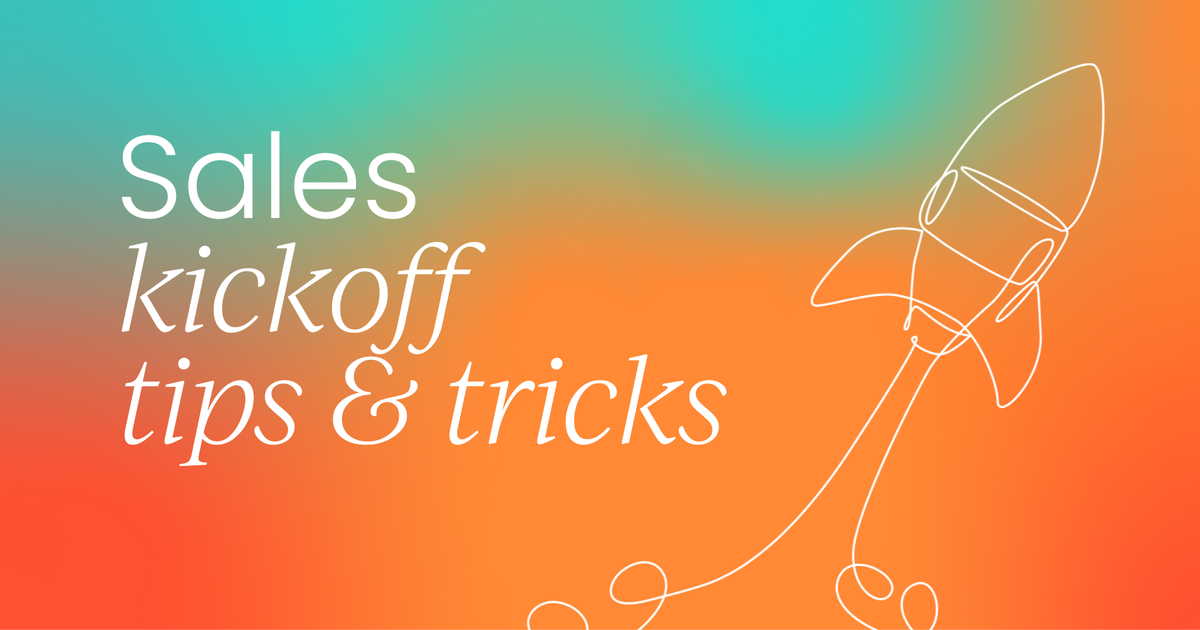
Wrapping up
I hope this gives you a clearer sense of direction as you build your enablement function. Remember to:
- Onboard yourself
- Start prioritizing
- Build cross-functional relationships
- Understand data and outcomes
- Advocate for yourself
These five practices won’t just help you survive as a solo practitioner — they’ll help you establish credibility, earn a seat at the table, and lay the foundation for a scalable, go-to-market enablement function.
Enablement is still evolving as a discipline, and that gives us a unique opportunity: we get to define what great looks like in our organizations.
If you approach your role with focus, intentionality, and a proactive mindset, you won’t just build programs — you’ll build influence.
Good luck, and remember: enablement is at its best when it drives real business impact and empowers people to do their best work.




 Follow us on LinkedIn
Follow us on LinkedIn

